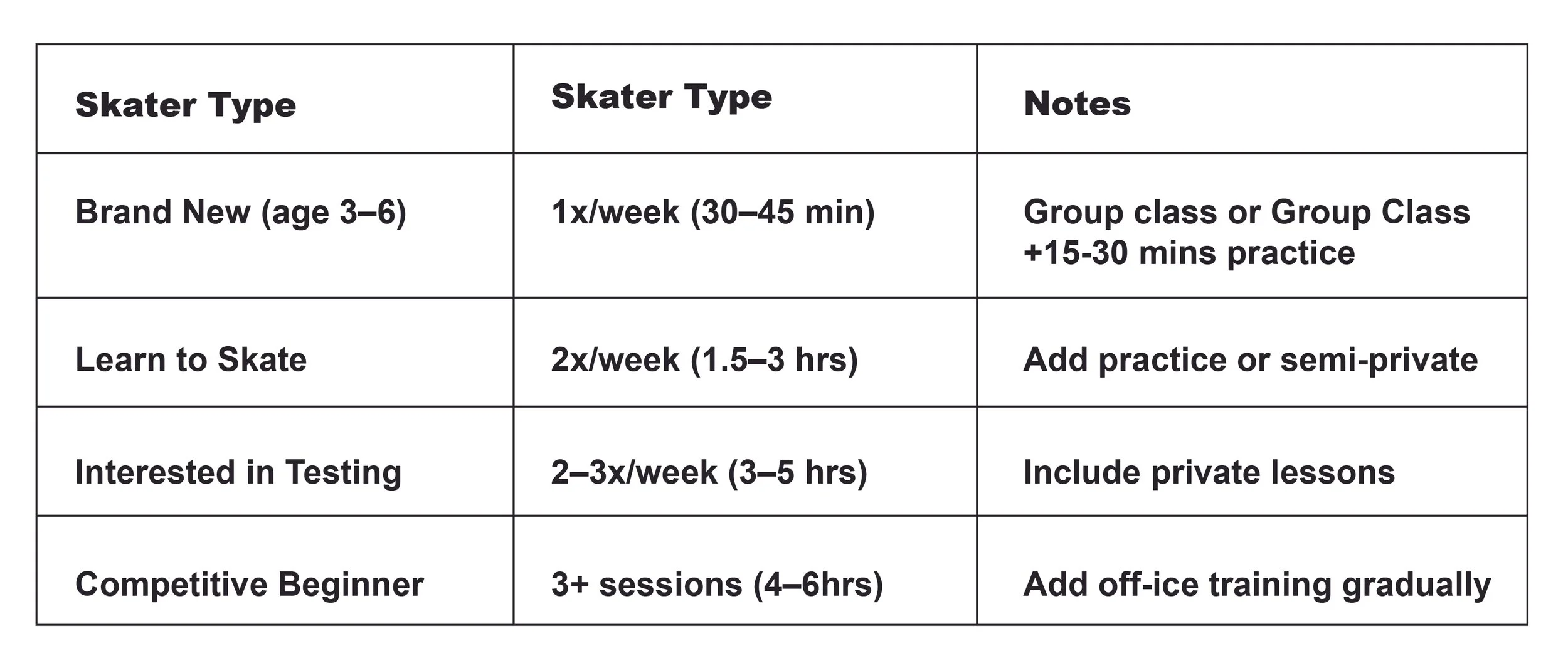How Much Ice Time Does a Beginner Skater Really Need?
When your child falls in love with skating, it’s only natural to want to help them improve. One of the most common questions I hear from parents is:
“How often should my child skate each week?”
Is one class a week enough? Do they need to skate every day to get better? Will too much ice time lead to burnout or injury?
These are smart questions — and the answer depends on your skater’s age, goals, and temperament.
In my experience…
What Counts as “Ice Time”?
Before we get into numbers, let’s define what “ice time” means.
Ice time includes:
• Group or private lessons
• Practice before/after lessons
• Freestyle sessions (open practice time for figure skaters)
It does not include:
• Off-ice classes (these support skating but don’t count as skating hours)
• Public skating for fun (though this can help with confidence and comfort on the ice)
The One-Session-Per-Week Beginner
Best for:
Brand new skaters (especially ages 3–6), or families who want a fun, low-pressure start.
Typical schedule:
• 30–60 minutes of group class per week
• May include a few minutes of practice before or after class
Benefits:
• Keeps things light and fun
• Affordable and easy to maintain
• Builds basic comfort and confidence
Tip:
If your skater is excited to do more after a month or two, that’s a great sign it’s time to add an extra session.
The Two-Times-Per-Week Progression Plan
Best for:
Skaters who are starting to fall in love with the sport and want to progress through the Learn to Skate levels steadily.
Typical schedule:
• One group class + one practice session OR semi-private lesson
• Total: 1.5 to 2.5 hours/week
Benefits:
• Skills develop faster with more consistency
• Builds a routine and introduces early discipline
• Keeps motivation high as progress is easier to see
Tip:
Pairing a second weekly session with a semi-private lesson is often more productive than repeating a group class.
Three or More Sessions: For the Passionate Beginner Skater
Best for:
Skaters who are beginning to test, preparing for competition, or showing strong drive and discipline.
Typical schedule:
• 2–3 days/week of skating
• Mix of lessons, freestyle practice, and possibly off-ice
Total:
3–6 hours/week (depending on age and stamina)
Benefits:
• Momentum! Skills get “locked in” faster
• Skaters develop stronger edges, balance, and confidence
• Builds test and performance readiness
Warning:
Only increase this when your skater is asking for more or clearly thriving. More is not always better if the joy disappears!
Finding the Sweet Spot (Not the Burnout Zone)
As a coach, here’s what I always tell parents:
“Skating should feel like something your child wants to do — not something they have to do.”
Watch for these signs of a healthy routine:
Your skater is excited to go to the rink
Your skater talks about skating often
They show steady progress and pride in their learning
They bounce back quickly from mistakes or falls
If they start showing signs of fatigue, frustration, or resistance — it might be time to cut back, not add more.
Sample Schedules by Skater Type
The Bottom Line: Progress Loves Consistency
You don’t need daily ice time for your skater to improve. What matters most is:
• Consistency (showing up every week)
• Quality (lessons with feedback + intentional practice)
• Joy (because kids who love skating stick with it)

